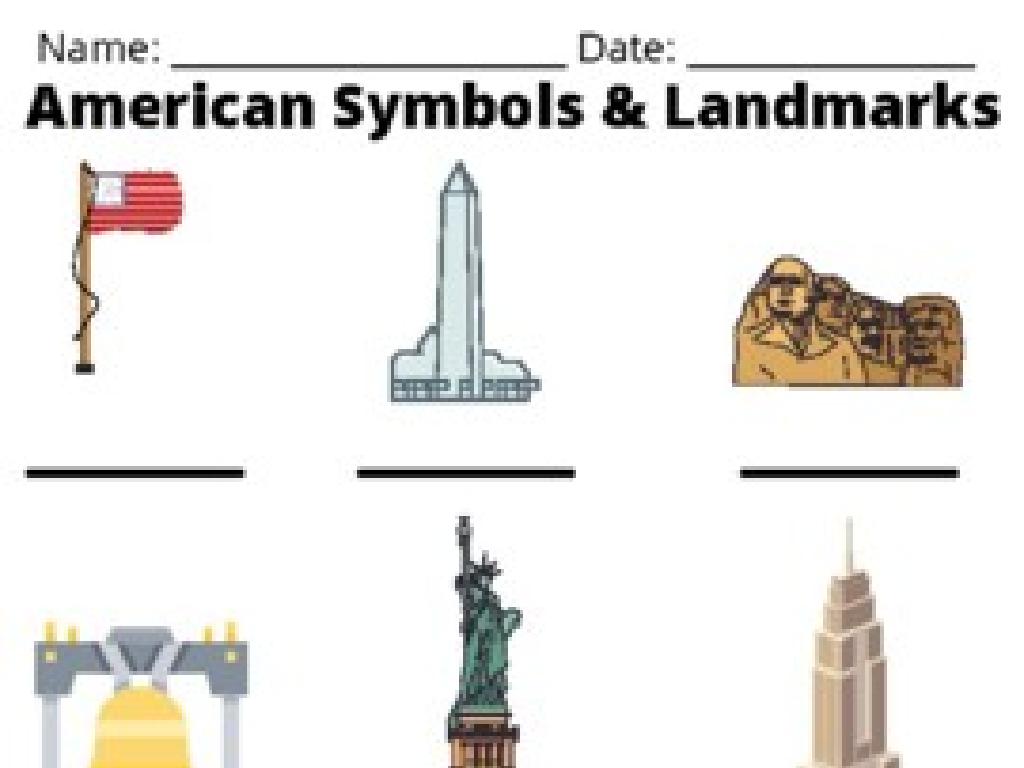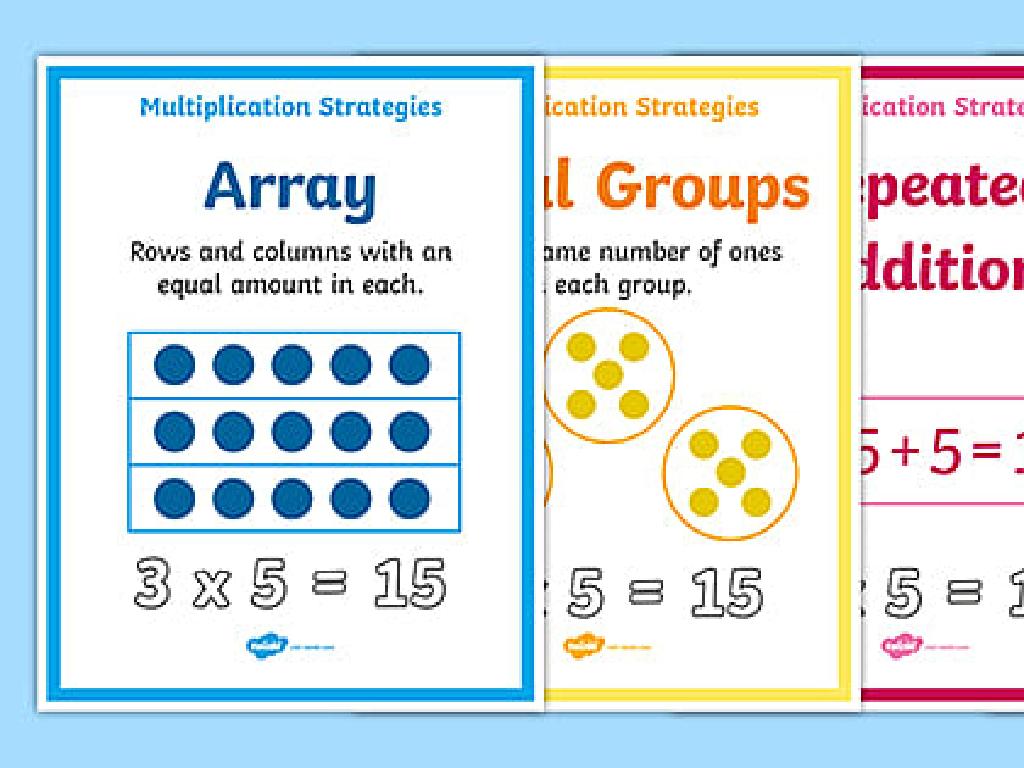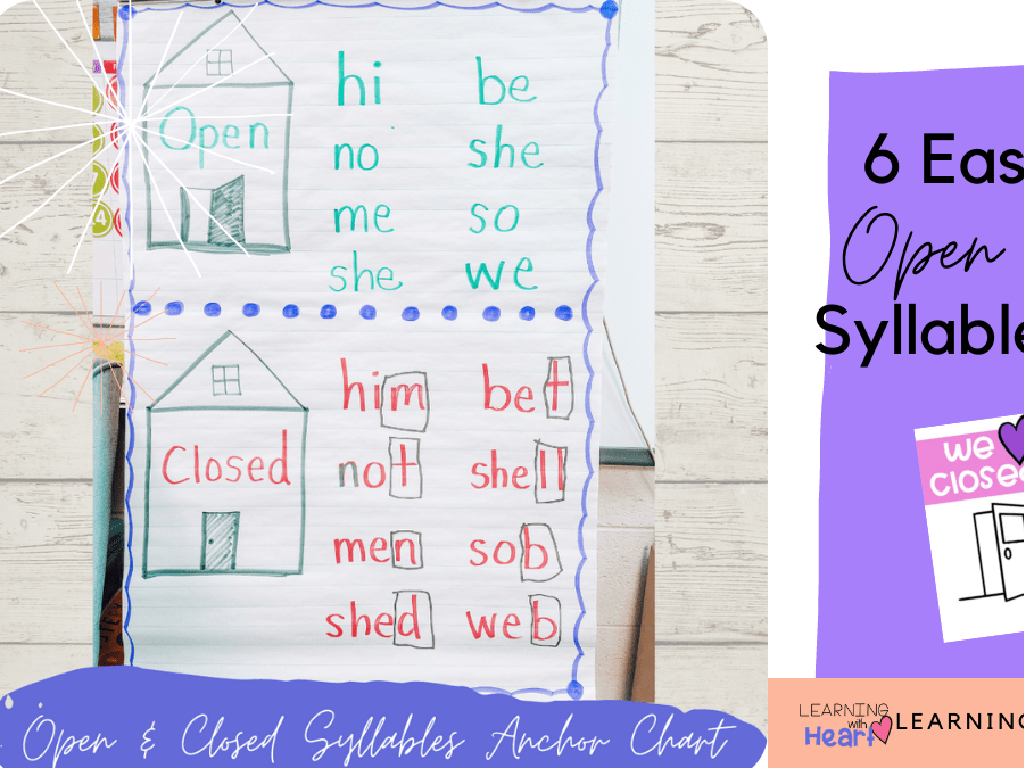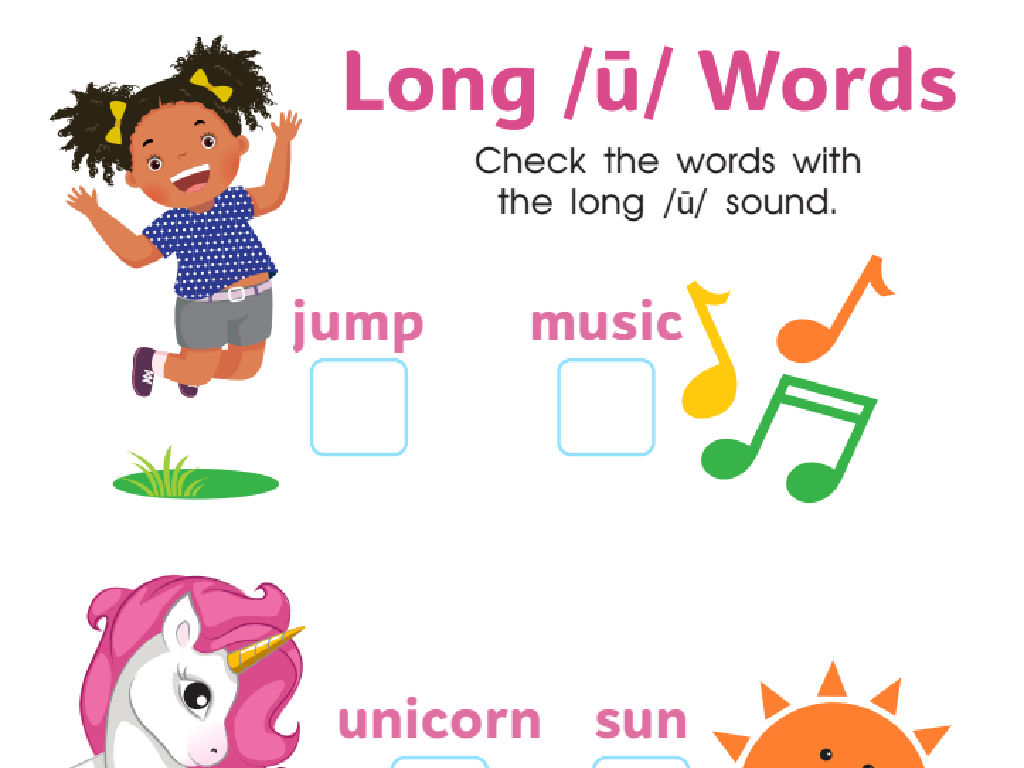Identify Appositives And Appositive Phrases
Subject: Language arts
Grade: Eighth grade
Topic: Phrases And Clauses
Please LOG IN to download the presentation. Access is available to registered users only.
View More Content
Appositives and Appositive Phrases
– Define appositives and phrases
– An appositive is a noun that renames another noun next to it, e.g., ‘The insect, a cockroach, is crawling.’
– Importance in sentence structure
– Identifying appositives in examples
– Example: My brother, a doctor, works at the hospital.
– Using appositives in your writing
– Practice by including appositives to add detail to your sentences.
|
This slide introduces the concept of appositives and appositive phrases, which are crucial components of sentence structure. Appositives provide additional information about a noun and are usually set off by commas. Understanding how to identify and use appositives will enhance students’ writing skills by allowing them to combine sentences and add descriptive detail. Encourage students to look for appositives in their reading and practice writing them by expanding simple sentences. Provide exercises where students can rewrite sentences to include appositives, ensuring they understand the punctuation and usage.
Understanding Appositives
– Define an appositive
– A noun or noun phrase that renames another noun right beside it
– Appositive usage in sentences
– My brother, a doctor, works long hours.
– Appositives add extra info
– They provide non-essential info that can be removed without changing the sentence’s meaning.
– Recognizing appositives
|
This slide introduces the concept of appositives, which are nouns or noun phrases that sit next to another noun to rename or provide additional information about it. Use examples to show how appositives can add detail and clarify the noun they accompany. Explain that appositives can be essential or non-essential, and non-essential appositives are usually set off by commas. Encourage students to identify appositives in sentences and understand their function in adding extra information. Provide practice sentences for students to find and punctuate appositives correctly.
Exploring Appositive Phrases
– Defining appositive phrases
– A phrase that renames a noun right beside it, e.g., ‘My brother, a doctor, works long hours.’
– Appositive phrase examples
– ‘My friend, an avid reader, has a vast collection of books.’
– Appositives add detail to nouns
– They provide additional information about the noun without altering the sentence’s meaning.
– Recognizing appositives in sentences
– Practice identifying appositives in various sentence structures.
|
This slide introduces students to appositive phrases, which are groups of words that rename or clarify a noun. It’s important to explain that an appositive phrase is usually set off by commas and can be removed without changing the fundamental meaning of the sentence. Provide clear examples to illustrate how appositive phrases add descriptive detail and depth to writing. Encourage students to create their own sentences with appositive phrases to enhance their understanding. In the next class, review these concepts and have students identify appositive phrases in their reading or in provided sentences.
Punctuating Appositives
– Commas with appositives
– Use commas to offset non-essential appositives from the rest of the sentence.
– Essential vs. non-essential
– Essential appositives define the noun and do not need commas. Non-essential add extra info and are comma-separated.
– Practice with examples
– ‘My brother, a doctor, works at the hospital.’ vs. ‘The teacher Mrs. Smith is here.’
– Understanding their roles
|
This slide aims to clarify the use of commas in sentences containing appositives. Students should understand that an appositive is a noun or noun phrase that renames or provides additional information about another noun right beside it. Commas are used to separate non-essential appositives, which are not crucial to the meaning of the sentence, from the rest of the sentence. Essential appositives, which are necessary to understand the sentence’s meaning, do not require commas. Provide students with practice sentences to apply these rules and discuss why the appositive is essential or non-essential. Encourage students to create their own sentences with both types of appositives for further practice.
Identifying Appositives and Appositive Phrases
– Define appositives and phrases
– An appositive is a noun that renames another noun next to it, e.g., ‘The insect, a cockroach, is crawling.’
– Interactive class examples
– Use sentences with clear appositives for class to identify together.
– Group practice activity
– Students work in groups to find appositives in sentences.
– Strategies to spot appositives
– Look for commas, extra information, and noun pairs.
|
This slide is aimed at teaching students how to identify appositives and appositive phrases. Begin by defining appositives as nouns or noun phrases that rename or clarify another noun. Use interactive examples on the board to engage the class in identifying appositives together. For group practice, provide sentences and have students work together to highlight the appositives. Discuss strategies such as looking for commas that often set off appositives, searching for additional information that explains a noun, and finding pairs of nouns where one defines the other. This activity will enhance students’ understanding of sentence structure and improve their descriptive writing skills.
Enhancing Writing with Appositives
– Define appositives in writing
– An appositive is a noun that renames another noun next to it, e.g., ‘The insect, a cockroach, is crawling.’
– Rewrite sentences with appositives
– Take a simple sentence and add detail with an appositive, e.g., ‘My friend, a skilled guitarist, played at the concert.’
– Use appositives in creative writing
– Incorporate appositives to add flavor to your stories, e.g., ‘Sarah, the fastest runner, won the race.’
– Practice with a writing prompt
|
This slide aims to teach students how to use appositives to enhance their writing. Start by defining appositives and showing how they can add additional information to a sentence without the need for a separate clause. Encourage students to take their own sentences and see how they can add detail and interest by including appositive phrases. For the creative writing prompt, ask students to write a short paragraph on any topic they choose, making sure to include appositives to describe at least two nouns in their writing. This exercise will help them see the practical application of appositives in their work. Provide examples and guide them through the process to ensure understanding.
Class Activity: Crafting Sentences with Appositives
– Pair up and write sentences including appositives
– Share your sentences with the class
– Engage in class discussion on appositive usage
– Exchange feedback on appositive use with your partner
|
This activity is designed to reinforce the concept of appositives by having students actively create and share their own examples. Start by explaining that an appositive is a noun or noun phrase that renames another noun right beside it. For example, ‘The insect, a cockroach, is crawling across the kitchen table.’ The activity will be conducted in pairs to encourage collaboration. After writing their sentences, students will share them with the class to discuss the effectiveness of the appositives used. Encourage students to provide constructive feedback to their partners. Possible variations of the activity could include creating appositives for vocabulary words, historical figures, or characters from a book they are reading.
Appositives: Review and Practice
– Recap on appositives
– Appositives are nouns or noun phrases that rename a nearby noun
– Class quiz on identifying appositives
– Look at sentences and find the noun that is renamed by the appositive
– Discuss challenging examples
– We’ll review sentences that are tricky and learn from them
– Address any questions or doubts
– It’s okay to ask questions if you’re unsure about any examples
|
Begin with a brief review of appositives, ensuring students recall that they are nouns or noun phrases that provide additional information about another noun close by. Conduct an interactive class quiz where students identify appositives in provided sentences. This will help reinforce their understanding through practice. After the quiz, discuss examples that were particularly difficult, clarifying any misconceptions. Encourage students to ask questions about any part of the lesson they found challenging. This will help ensure that all students are on the same page and understand the concept of appositives fully before moving on.
Homework: Crafting Sentences with Appositives
– Write ten sentences with appositives
– Include essential and non-essential types
– Essential appositives define, non-essential add extra info
– Correct punctuation for appositives
– Use commas for non-essential, no commas for essential
– Reflect on the use of appositives
– Consider how appositives add detail or clarify nouns
|
This homework assignment is designed to reinforce the students’ understanding of appositives and how they function within sentences. Students should write ten sentences that incorporate appositives, ensuring they include both essential appositives (which are necessary to the meaning of the sentence and are not set off by commas) and non-essential appositives (which provide additional information and are surrounded by commas). Emphasize the importance of correct punctuation, as it can change the meaning of a sentence. Encourage students to think about how appositives can add richness to their writing by providing additional details or clarifying complex ideas. In the next class, review some of the sentences to discuss the effectiveness of the appositives and their punctuation.






